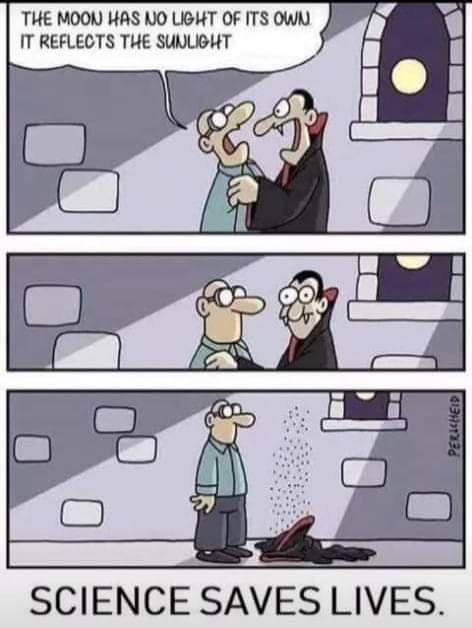Leaderboard
Popular Content
Showing content with the highest reputation on 05/29/21 in all areas
-
This statement is false on its face. That's why readers are put off and have no idea what you're talking about. Could you give a specific example? Say I have a line segment of length 2 and another of length 3, both with one end at the origin of the x-y plane. Can you show how you get the third side? What additional information is supplied? Please be specific. No need for extraneous discussions of the travails of your long-suffering teacher. Just show an example of two lengths and how you determine the third one. Also, what does pnp stand for? Give a specific, completely worked out example and leave out all other extraneous commentary, and that will go a long way toward clear mathematical communication. Of course if you have two sides of a triangle plus some as yet to be specified information, the additional information might be sufficient to work out the third side. Why don't you give an example so people can see what you are talking about?2 points
-
2 points
-
Hey everyone, I hope the question is not off topic. A few days ago I made a saline solution (45g salt and 180ml of tap water) in a stainless steel pan. This solution was boiled to dissolve the salt and used to add a specific amount of salt to a beer I made, a german style that is traditionally made with salty water. While I was dosing the salt in each bottle I noticed that the solution had turned sligh yellowish, but at first I assumed it was just some salt impurity. However, a few hours after bottling I came back to wash the pan and realized the salt had started to corrode the bottom, and at that point there was some stuff floating and visible areas of corrosion. Now, since I dosed 2-3ml of this solution in each bottle (not all of them though), is this of any health concern? Is it just iron? I used a magnet and it was attracted by the pan, so I guess it is not AISI 312 but rather some ferritic type of stainless steel (it's a cheap pan, single wall thin metal). Thanks to everyone, and please remove if off topic1 point
-
1 point
-
Should somebody let the authorities know that this toy company is breaking the laws of physics? https://www.hexbug.com/nano1 point
-
Not hydrogen atoms. You want a conducting solid material, such as a metal plate, because the idea - at least as I recall it - is that with light above a certain frequency a current flows in a circuit, due to the emitted electrons, whereas below that frequency it doesn't. The experimental setup to "catch" the emitted electrons is shown in this diagram from the Wiki page: https://en.wikipedia.org/wiki/Photoelectric_effect#/media/File:Photoelectric_effect_measurement_apparatus_-_microscopic_picture.svg You can certainly ionise hydrogen or other gases with light with energy above the ionisation energy for the gas, but this is not what people mean when they talk about the photoelectric effect. As for capturing and containing them, you will struggle because they will repel one another and a bulk -ve charge will accumulate.1 point
-
That's weird, when I click the link it takes me to the imdb site for the episode titled "The Neutral Zone" The one line description is: "While assigned to investigate missing outposts in the Neutral Zone, the Enterprise revives three cryogenically frozen people found aboard a wayward derelict Earth vessel."1 point
-
There’s nothing unreasonable in asking you to check on the numbers for something that you are questioning. Your response suggests you did not comprehend the post. Wait, iNow says “I bet” about some prediction, and you eviscerate them for not having the actual data, but now you say “I doubt” without supporting data? Hold yourself to at least the standard you ask of others. Hypocrisy isn’t a good look. US stats are available from the CDC https://www.cdc.gov/nchs/nvss/vsrr/covid_weekly/index.htm1 point
-
No. To create a current, a photon would have to be absorbed by an electron which then would be ejected from the medium's atoms and accelerated. The ejection of an electron from an atom in a medium requires the addition of energy. Such thing happens in e.g. photoelectric effect: https://en.wikipedia.org/wiki/Photoelectric_effect A photon passing though a transparent medium has to exit it from the opposite side (otherwise the medium is opaque). An opaque medium can: reflect photons, refract photons (in random directions) or absorb photons. (a transparent medium for photon with one energy/frequency/wavelength is often opaque for photon with different properties!) An alternative (and actually more common) thing that can happen after a photon is absorbed as it passes through a medium is heating it. Radiowave antennas are absorbing some photons, which accelerate some (a very few) electrons in the metal, in one direction, then in other direction (depending on photon properties). Therefore the antennas are connected to amplifiers https://en.wikipedia.org/wiki/Antenna_amplifier which detect these minor currents and amplify them.1 point
-
And that is precisely why we did not manage to stamp out the disease in the first place and why the chances of stamping it out is diminishing. I wished I could say I was surprised but I really am just disappointed. In addition what has already been mentioned, one can get more details from state/provincial data as well from COVID-Net (USA). Looking at the cumulative values, about 20% of all recorded COVID-19 related hospitalizations in the US were folks below 40 years. Also, being fit is is not confer magic protection. There have been plenty of hospitalizations of folks who had no known comorbidities. The data in papers are pretty broad (as they are all over the world with different cohorts), but we can see among folks in the 40s without comorbidities about 15% develop severe symptoms, including death. I.e. while there is a correlation with worse outcomes in cases of certain risk factors, thinking that you are safe just because you have no (known) issues is very risk (and again, at minimum you would be likely become a spreader and incubator). Also when it comes to background monitoring of effects, COVID-19 vaccines are administered as a much higher rate than other vaccines (influenza, for example is typically only as high as 40% among the target age group). So we do not have good apples to apples comparisons here. However, there is clinical data from the trials and if we look at e.g. the Pfizer documents, about 0.6% of the vaccine group had at least one serious adverse event compared to 0.5% in the placebo group. Adverse effects in case of COVID-19 in the 30s age bracket (minimum hospitalization) is somewhere around 14-20%. So if the question is not between two different vaccines but between vaccines and COVID-19 the answer is clear, even if one ignores the public health need of vaccinations (which at this point one really, really shouldn't).1 point
-
Science and morality are different disciplines - one is what we observe in the universe, the other is what we bring to it. Morality is not so straight-forward that we can afford to discard the millennia of thinking that has shaped our cultures. Instead we should be building upon that base, taking what is useful from our mythologies, and creating new ones in the shape of our aspirations. If they are such idiots why give them credence by engaging with them? Such people have the same mentality that has people believing in a flat earth and lizard people ruling the world. No one believing it will be reasoned out of it and it just raises their profile by putting them on the same platform as respected voices in science. It would be better to give a platform to reasonable people of religious leanings (yes they exist), so we can more quickly transform our mythologies and incorporate our scientific understandings. This is why i believe Sagan was the greatest communicator of science - he didn't just tear down old ideas, he offered a tangible basis for new ideas. And that basis is the same one that can be found in all spiritual traditions: wonder.1 point
-
Pretty sure Krauss in one of the other interview Q+A videos, mentions that the seemingly good side of religion, as per the 10 commandments for example, does not have a monopoly on those qualities and ethics, rather that those qualities and ethics are more endowed with science in fact, as science and the scientific method is based on truth and reality, and how democracy would not be able to function without the basis of scientific pronciples and fact, rather then the myth portrayed in a mythical book written by peasents during the Iron age....the very first answer by Krauss in the second video of this thread. At best, it simply puts religion in some "isolated" respects, on a level with science. There is also comments with regards to the term "Atheist", and the pidgeon holing of people with that term, [Atheist] simply because he or she expresses the scientific methodology and the principles of science. Personally I reject that label. Again, I would urge others to take the time to watch the Q+A videos in particular, and the logical succint replies to some of those questions, against real Idiots, as per the first video and Brian Cox and the stupid stupidity he needed to slap down. I see what is generally termed as the "rise of the new Atheist" as jargon by so called critics. An extract from the following seems to support my view on that..... https://en.wikipedia.org/wiki/New_Atheism "In a 2010 column entitled "Why I Don't Believe in the New Atheism", Tom Flynn contends that what has been called "New Atheism" is neither a movement nor new, and that what was new was the publication of atheist material by big-name publishers, read by millions, and appearing on bestseller lists"1 point







